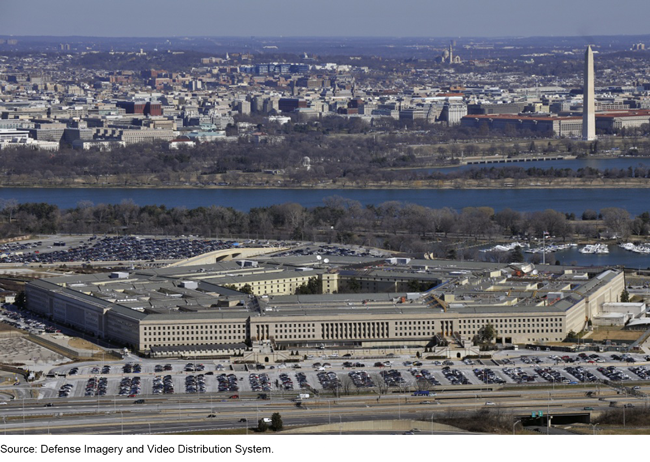Military Readiness: Department of Defense Domain Readiness Varied from Fiscal Year 2017 through Fiscal Year 2019
Fast Facts
Nearly 2 decades of conflict has degraded U.S. military readiness—the forces' ability to fight and meet the demands of their assigned missions. The National Defense Strategy states that DOD should be ready to operate in all warfighting domains—ground, sea, air, space, and cyber.
DOD has a plan to recover readiness, which includes goals that align with the national strategy.
From FY 2017 through FY 2019, U.S. military readiness increased in the ground domain and declined in the sea domain, while readiness ratings in the space, air, and cyber domains were mixed.

Highlights
What GAO Found
The Department of Defense (DOD) has developed a plan for readiness recovery—referred to as the Readiness Recovery Framework—which includes goals and metrics to assess progress in addressing primary readiness issues. Since 2018, DOD has revised its readiness recovery goals and metrics to align with the 2018 National Defense Strategy according to DOD officials.
Readiness increased in the ground domain and declined in the sea domain from fiscal year 2017 through fiscal year 2019, and rating changes were mixed in the air, space, and cyber domains. The ratings are based on GAO's analysis of data for selected mission areas—groups of similar capabilities from across the services, such as fighter jets—and force elements—subsets of units within each mission area—within each of the five domains.
Change in Domain Resource and Mission Capability Readiness Ratings from Fiscal Years 2017-2019

Note: Resource readiness ratings measure the status of personnel, equipment, supplies, and training. Mission capability readiness ratings measure whether a unit can accomplish its designed missions.
GAO found that reported domain readiness did not meet readiness recovery goals identified by the military services. DOD has identified a wide range of challenges it faces as it seeks to improve readiness in each of the five domains. For example, within the sea domain, the Navy identified limited maintenance capacity at private and public shipyards as the primary challenge for recovering ship and submarine readiness. GAO will continue to monitor and report on DOD's domain readiness as required by Congress through 2022.
In May 2019, GAO reported that DOD was not measuring or reporting readiness to perform full-spectrum operations by domain, as required by law, and recommended DOD do so. However, since 2019 the Office of the Secretary of Defense has expressed that the ground, sea, and air domains are captured in the Readiness Recovery Framework, and that instead of developing separate metrics for measuring readiness by domains, it is focused on tracking readiness recovery by military service. GAO continues to believe our recommendation is valid.
Why GAO Did This Study
Nearly 2 decades of conflict has degraded military readiness at a time when the National Defense Strategy calls for preparedness for great-power competition. The strategy states that DOD should be ready to operate in all warfighting domains—ground, sea, air, space, and cyber.
To assess readiness over time, the John S. McCain National Defense Authorization Act for Fiscal Year 2019 included a provision that GAO report annually through 2022—using 2017 as a baseline—on the readiness of the military in the ground, sea, air, space, and cyber domains. This report describes (1) the extent to which DOD has established a plan with goals and metrics for readiness recovery and (2) how readiness has changed from fiscal year 2017 through fiscal year 2019 in each domain.
This report is a public version of information reported in classified reports that GAO issued from August 2018 through January 2020, with information GAO has updated as appropriate and the most current data available for underlying reports on which this report is based. Information DOD deemed classified has been omitted. GAO reviewed readiness recovery plans and, in consultation with DOD, selected nongeneralizable samples of forces for each domain. GAO grouped the forces into mission areas and analyzed readiness data.
Recommendations
GAO has previously made five recommendations to improve DOD's readiness recovery efforts that DOD has implemented. GAO has also recommended that DOD establish metrics to measure readiness in each domain, which DOD has not done.
